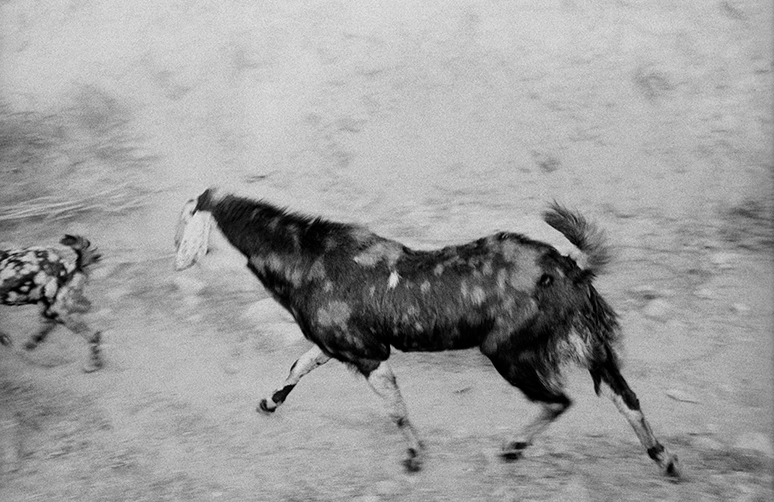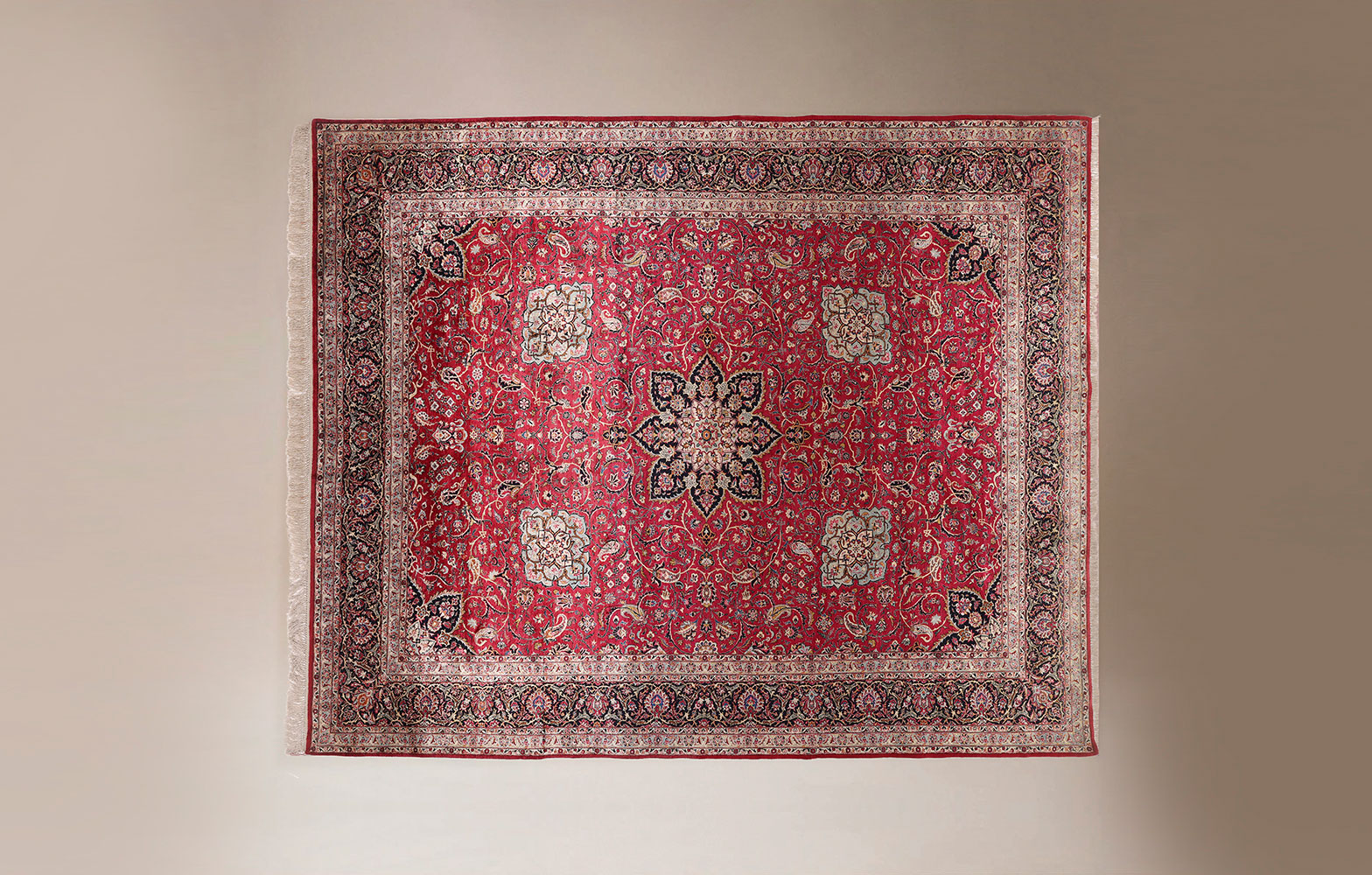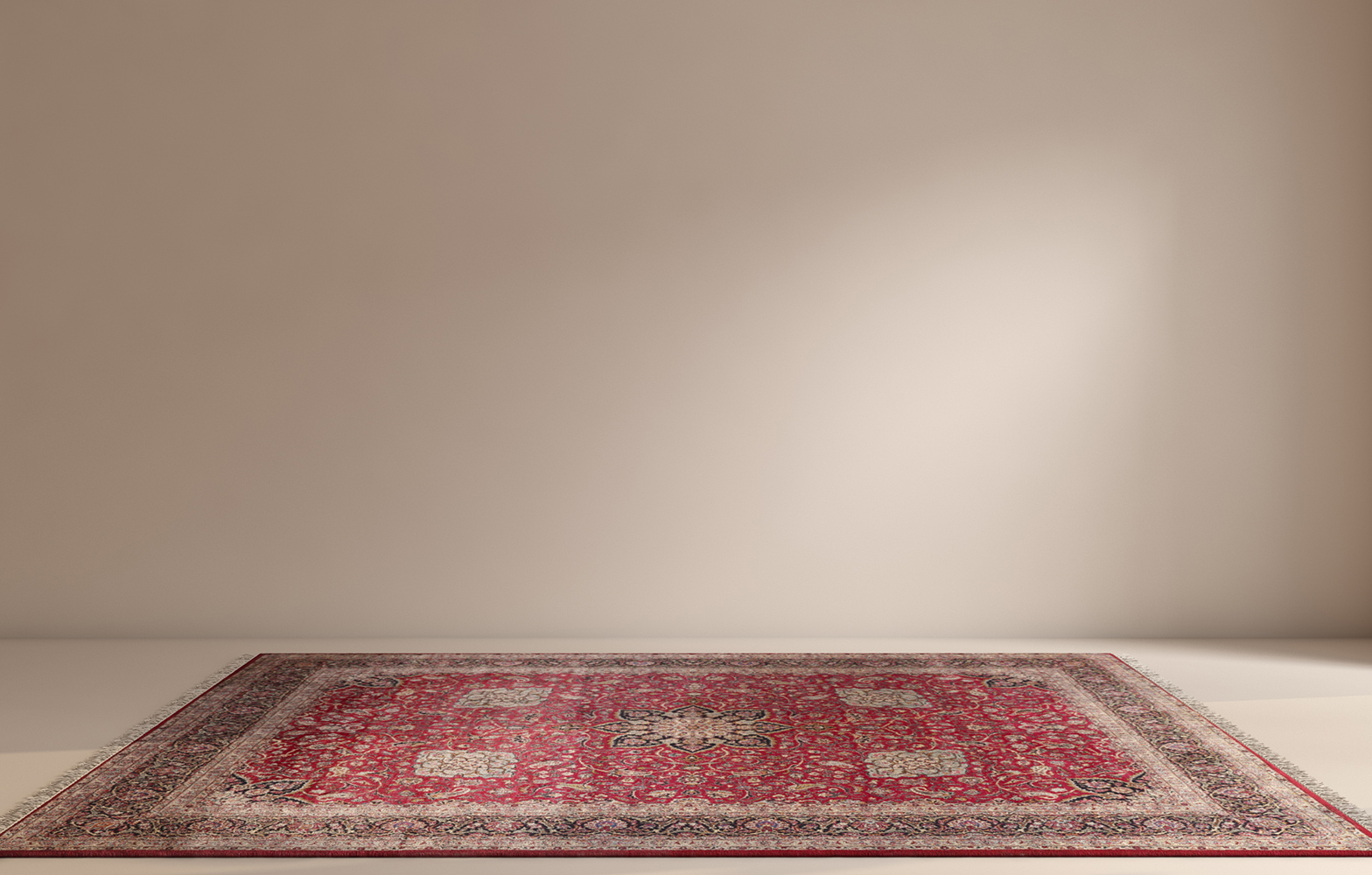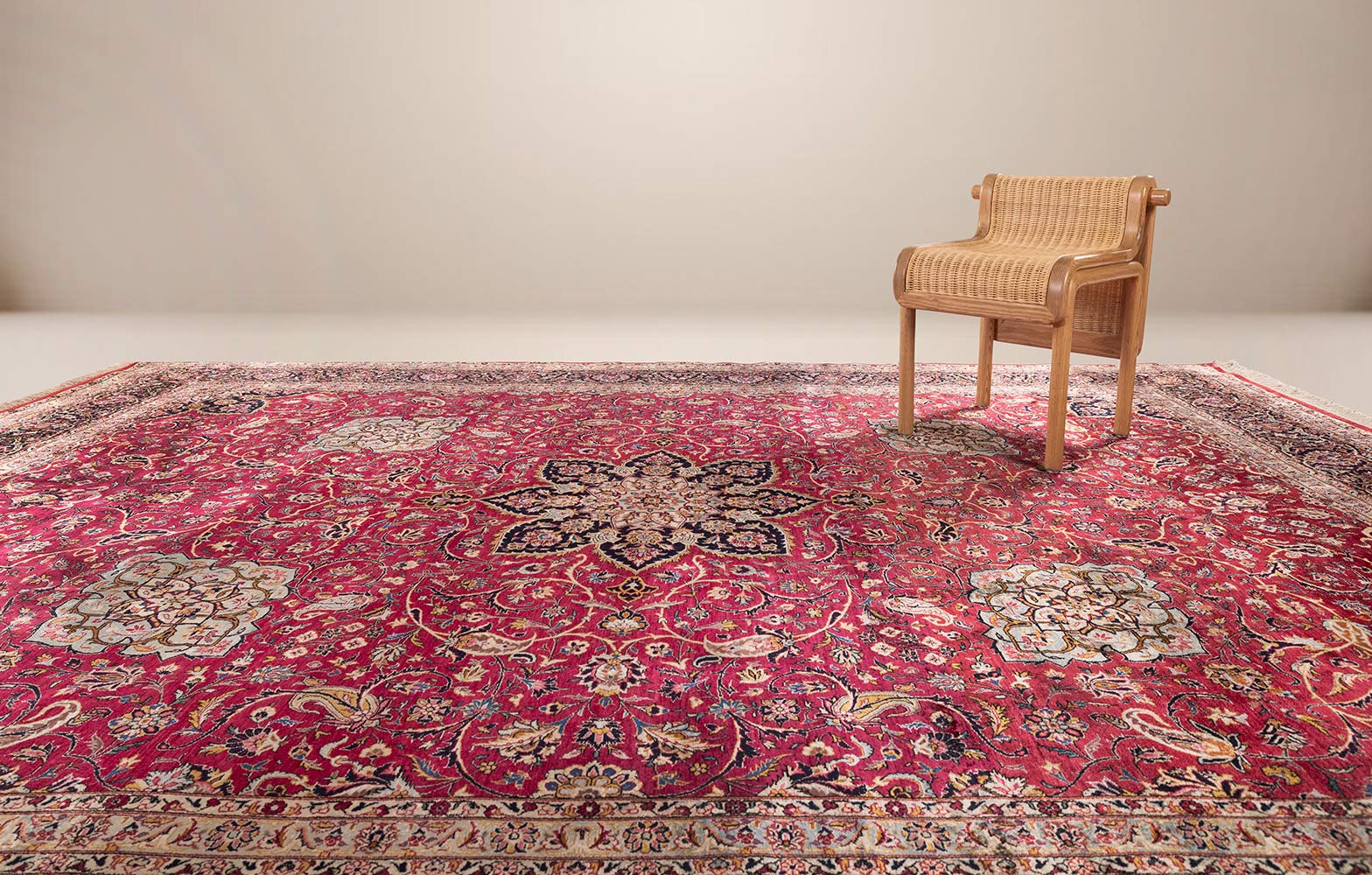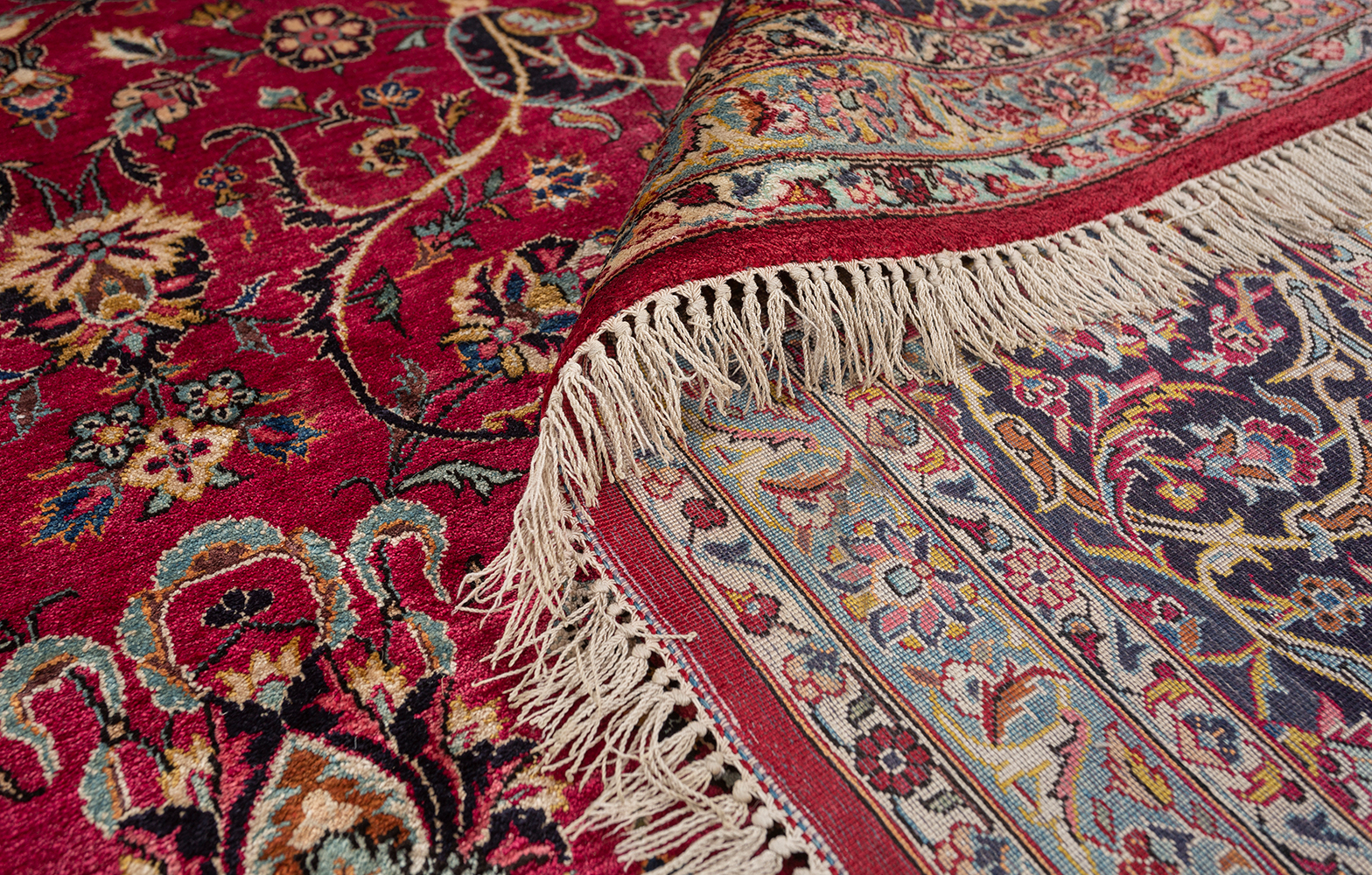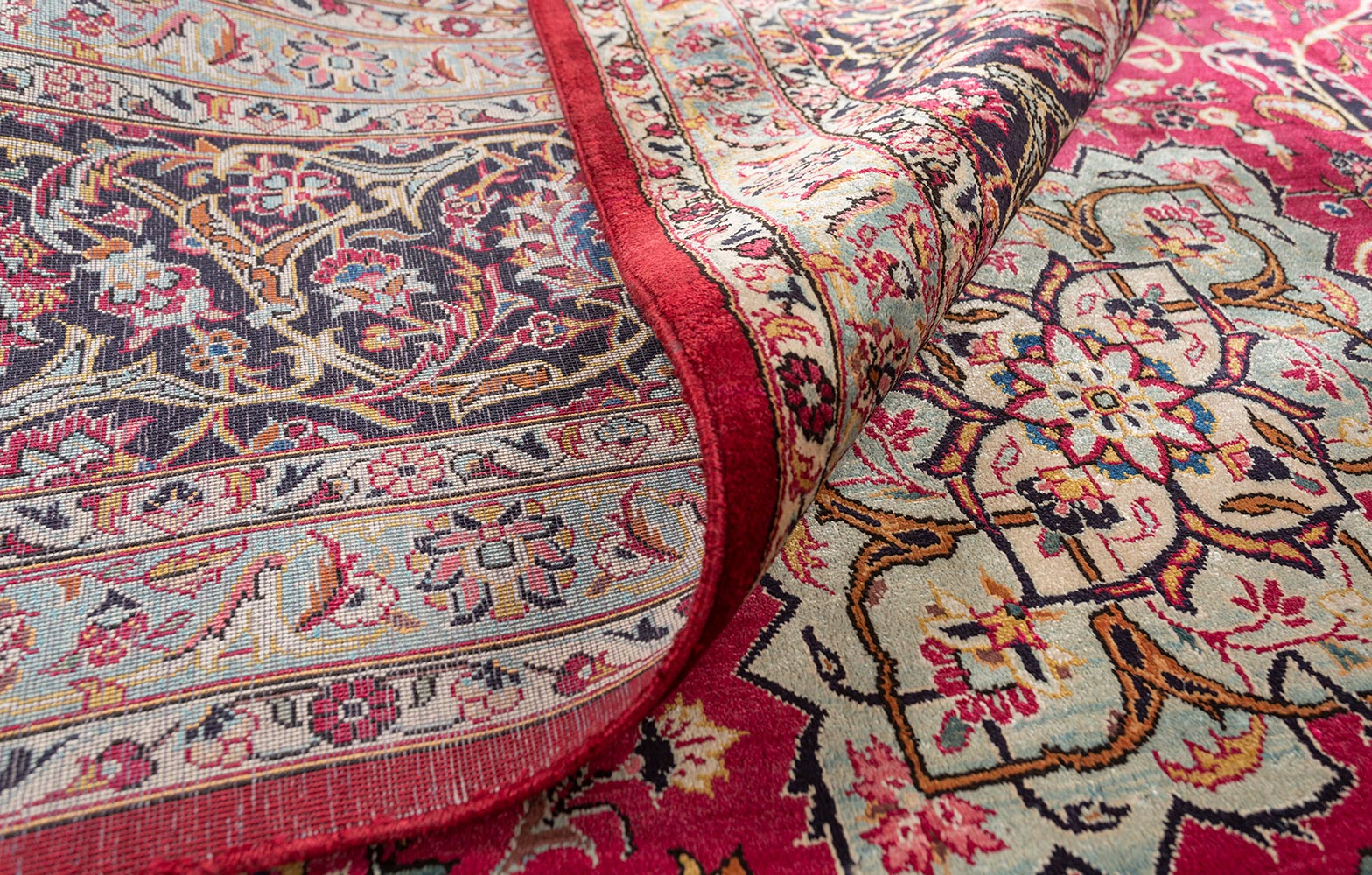-
Kashan Rug
IranC.1920
196 knots per square inch
108” x 150” [PROVENANCE]
IRAN [CRAFTSMANSHIP]
KASHAN
This antique silk Kashan carpet is a fine example of the Persian tradition of carpet weaving in terms of craftsmanship, with the historical references embedded in its production and design. Made with a silk pile on silk foundation, the carpet is densely knotted with 324 knots per square inch, showcasing the intricate work of the weavers.
This carpet was produced in Kashan, a city located halfway between Isfahan and Tehran in present-day Iran. The design of this carpet heavily references the carpet production of the Safavid Empire. The Safavid Empire (1501–1736) was a Persian state founded in modern-day Iran, widely recognized for its significant contributions to Persian art and culture, particularly in the field of carpet weaving. The Safavids established one of the most renowned carpet traditions in the world, a legacy that has and continues to influence carpet design and production to this day and can clearly be seen in this carpet. Kashan has been a major center of carpet production since the Safavid period and remains one of the few well-documented sources of 16th century silk carpets. It has produced carpets with the most established historical references to this era. (Erdmann, Kurt, Seven Hundred Years of Oriental Carpets, Faber and Faber, London, 1970; Eiland, Murray L. & Eiland, Murray L., Oriental Rugs: A Complete Guide, Rev. ed., Laurence King, London, 1998)
During the Safavid period, Kashan was known for its silk carpets, which are the origin of the densely knotted Persian silk carpets. The knotting technique required to produce these silk rugs was later adopted by the city of Qum, which today is a major center for Persian silk carpet production. (Eiland, Murray L. & Eiland, Murray L., Oriental Rugs: A Complete Guide , Rev. ed., Laurence King, London, 1998)
The silk carpets of Kashan, originating in the sixteenth century, are recognized by carpet experts as a distinct group of old Persian carpets. Some of the first well-known examples of these carpets were displayed at the 1916 exhibition and can still be seen in the Metropolitan Museum of Art in their Altman Collection. The sixteenth-century silk Kashans often featured a central medallion with quatre- or octafolded medallions. A similar medallion design can also be found on many decorative leather book covers from the same period, suggesting that the manuscript design was incorporated into the visual repertoire of Safavid weavers. These carpets could feature or omit medallion appendages, often in the form of bands or cartouches, and frequently contained palmettes in the corners of the field. (Erdmann, Kurt, Seven Hundred Years of Oriental Carpets, Faber and Faber, London, 1970)
This piece, originating from the early 20th century —almost 300 years after the height of Safavid culture—shows many historical references to the Safavid high culture. This silk Kashan features several design elements that are directly related to silk Kashans from the 16th century. It prominently displays a traditional octafolded medallion, a motif commonly found in old Kashan silk carpets, where the medallion is formed as a flower with eight leaves. (See example: Silk Knotted Carpet, 245 x 169 cm, Persia, Kashan, 16th century, New York, Metropolitan Museum, Department of Islamic Art.). 16th century Kashans often featured medallions with or without appendages, such as bands or cartouches. This carpet includes the traditional cartouches and palmette corners, further cementing its ties to the Safavid era. (See example: Silk Knotted Carpet , 242 x 165 cm, Persia, Kashan, 16th century, Washington, National Gallery, Widener Collection).
This red-ground silk antique Kashan is an exquisite example of the late 19th to early 20th-century revival of carpet production, where ancient designs and traditions are reinterpreted and reborn.
Essay by Ivar Svensson
